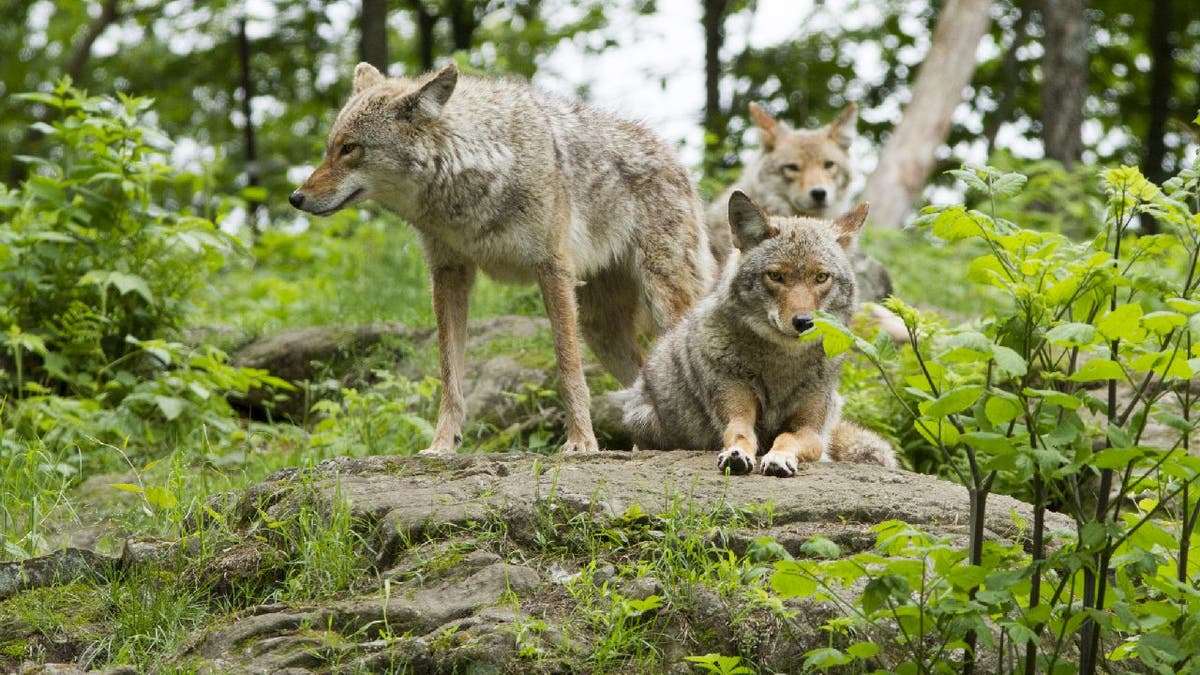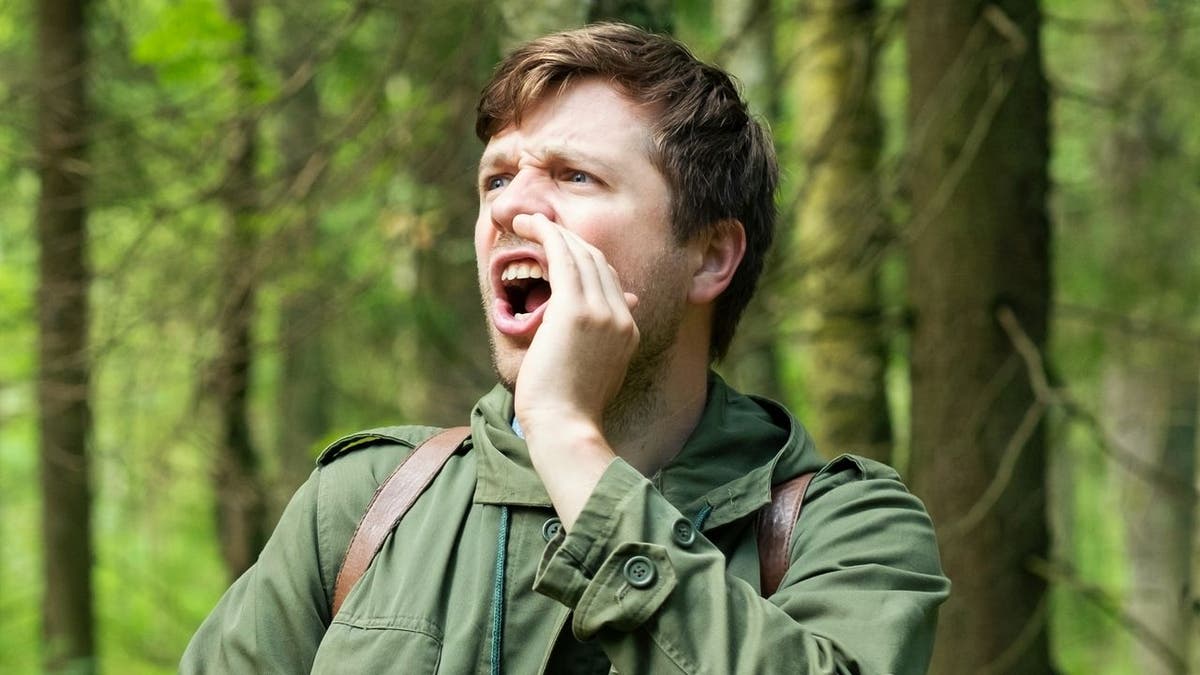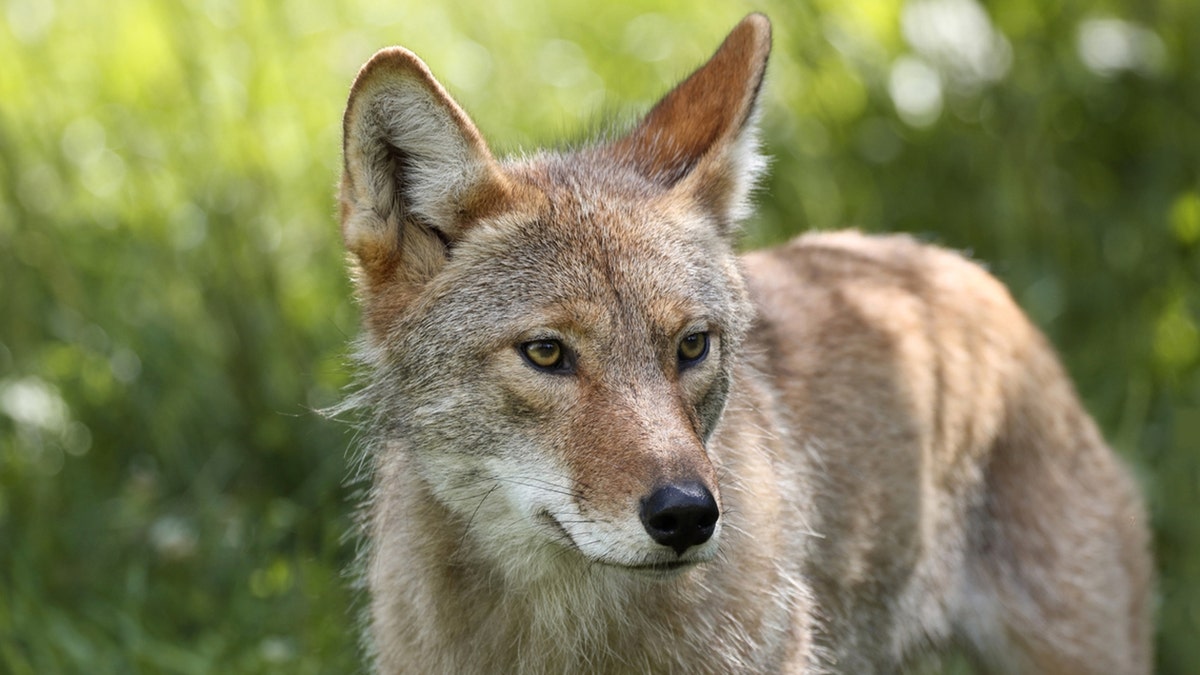Fox News Flash top headlines for October 18
Fox News Flash top headlines are here. Check out what's clicking on Foxnews.com.
A dog walker in Massachusetts recently called upon law enforcement for help after they became surrounded by a pack of coyotes.
The Swampscott Police Department in Essex County confirmed the incident took place on Saturday, Oct. 15. Officers reportedly counted "at least nine coyotes" when they arrived at the scene near Rockyledge Road, according to a Facebook post the department addressed to the public.
"Thankfully these coyotes appeared to be scared off by the arrival of the cruisers and the strobe lights," the department wrote. "The Officers escorted the caller and their dog back to their residence without further incident."
MA DOG WALKER SURROUNDED BY PACK OF COYOTES NORTH OF BOSTON
Similar unexpected coyote encounters have occurred throughout America in recent years, including in the state of Vermont, where a woman was attacked while walking her dog in June, and in California, where a coyote was removed from a home after sneaking through a dog door in May, Fox News Digital reported.

Young coyotes can sometimes be found traveling in a small pack-like group. (iStock)
Typically, coyotes don’t travel in large groups, but the chance of it happening increases during the fall, according to Jo Yellis, project coordinator at CoyoteSmarts, a public information initiative in Rhode Island that addresses the growing presence of coyotes on Aquidneck Island and throughout the state.
MARTHA STEWART SAYS COYOTES KILLED 6 OF HER PET PEACOCKS
"Fall is coyote ‘dispersal season’ when sightings and encounters tend to be on the rise," Yellis told Fox News Digital. "This is the time when last year's pups start leaving the pack to strike out on their own. It's also the time when you're likely to see them moving around in groups rather than alone or in pairs."
"Their natural curiosity and inexperience can lead to some risky behavior like following or approaching people as they begin to explore the world and try to find their place in it," Yellis continued. "It's a perilous time for young coyotes and many do not survive the challenges that confront them."
Keeping your dog safe
Paris Permenter, the founder of dog waste bag company Yucky Puppy and the co-founder of lifestyle blog DogTipper.com, is a pet and travel writer who is raising two dogs in Cedar Park, Texas.
She told Fox News Digital that coyotes are wild animals she has to think about because she walks her dogs in a protected bird preserve on the outskirts of Austin.
PENNSYLVANIA ANIMAL SHELTER IDENTIFIES MYSTERY ANIMAL AS A COYOTE
"If a dog walker sees coyotes at a distance, stop walking," Permenter said.
"Immediately put your dog on a leash if he or she is not already, place your dog in a sit [position] and make some noise, keeping your eye on the coyote. This will typically cause the coyote to continue on his way."

Dog walkers who live in areas where coyotes also reside should keep their dogs leashed and close by during outings. (iStock)
"It's especially important not to run or allow your dog to run which can trigger the coyote's prey drive," Permenter noted.
If a coyote doesn’t leave when noise is made or multiple coyotes are present, Permenter said dog walkers should make themselves appear large by raising their arms over their head – all while keeping their eyes on the animal and their leashed dogs close.
"Shout toward the coyote, and if he approaches, throw rocks or sticks in the direction of the coyote," Permenter said. "You don't want to hit the coyote but [you should] do everything you can to discourage the coyote from getting closer."
COYOTE BITES MASSACHUSETTS BOY, 5, PLAYING IN BACKYARD SANDBOX
"When the coyote moves on, back away, keeping an eye out for the coyote and a firm hold on your dog's leash," she added.
More on safety: Use scare tactics
Wildlife experts from the Urban Coyote Research Project, CoyoteSmarts and The Humane Society generally agree that scaring coyotes away before they can become a threat is the best option to keep humans and pets safe, but there are some caveats.
The Urban Coyote Research Project, a Chicago-based program that examines urban coyote ecology, advises the public to avoid feeding coyotes, so they don’t lose their fear of humans and feel motivated to experiment with prey.
"Many people unintentionally feed coyotes by leaving pet food or garbage out at night or having large bird feeders," the research group wrote in a How to Avoid Conflicts with Coyotes guide.
"Coyotes are usually not interested in bird food, but bird feeders often attract rodents, especially squirrels, which then attract coyotes," the group added.
BRAVE YORKIE FIGHTS OFF COYOTE TO SAVE HER 10-YEAR-OLD OWNER
Other safety tips from the Urban Coyote Research Project include not letting pets run loose or leave them unattended in areas (not even in fenced yards) where coyotes live, using remote-activated lights, sound devices or pepper spray to repel coyotes, reporting aggressive or fearless coyote behavior to authorities, and avoiding conflict if coyotes are keeping their distance.

Shouting and making other loud noises could potentially scare coyotes away, (iStock)
The guidelines CoyoteSmarts offers residents who live around coyotes include leaving the animals alone if they’re spotted crossing a yard or street, so long as there’s no food present in the area and inhabitants are secure, including pets and children.
In instances where a coyote or a group of coyotes are lounging in a yard, approaching or following people, scaring the animals away (AKA "hazing") is recommended, according to the group’s online "What To Do If You See A Coyote" guideline.
Scare tactics, according to CoyoteSmarts, can include:
-Making loud noises
-Presenting as big as possible
-Waving arms, clapping, shouting with an authoritative voice, banging pots and pans, using an air horn or whistle
-Throwing small stones, sticks or balls
-Using a hose or squirt gun filled with water and vinegar
-Shaking a metal can filled with pennies or pebbles
SAN FRANCISCO AUTHORITIES SEEK WOMAN ALLEGEDLY SEEN FEEDING COYOTE IN PHOTO
In addition, people shouldn’t run or turn their back on coyotes during the hazing process, the guidelines state.
CoyoteSmarts says hazing should be avoided for coyotes who are accompanied by pups or appear sick or injured, and instead police or wildlife authorities should be called for removal assistance.

Coyotes typically keep their distance from humans. (iStock)
The Humane Society’s "coyote hazing" guidelines note that it may take multiple attempts to scare off coyotes.
Some coyotes might not immediately run if they’ve never been hazed before, so taking a step forward and increasing "the intensity of your hazing" could help, The Humane Society reports.
CLICK HERE TO GET THE FOX NEWS APP
The animal welfare organization recommends continuous hazing until a coyote or coyote group completely leaves the area. It’s not enough of a distance if coyotes run a short distance and look back at their hazer.
How rare is a coyote attack?
Coyotes are found in every U.S. state, except Hawaii, according to National Geographic.
Exact populations are hard to pin down on a national level nationwide, but coyotes have reportedly expanded their range in recent years.
In Kansas, the state Department of Wildlife and Parks estimates there are 150,000 to 300,000 coyotes living in the Sunflower State, while in California, the state Department of Fish and Wildlife estimates there are 250,000 to 750,000 coyotes living in the Golden State.

Coyotes are carnivorous and prey on smaller mammals. (iStock)
Coyotes are social animals who live in family groups, but they don’t usually form packs and instead opt to hunt and travel solo or in "loose pairs," according to the U.S. National Park Service.
FOLLOW US ON FACEBOOK FOR MORE FOX LIFESTYLE NEWS
Attacks are rare. In a Human Dimensions of Wildlife study that analyzed coyote attack data from 1960 to 2006, there were 142 reported coyote attacks that resulted in 159 victims in the U.S. and Canada, according to the Urban Coyote Research Project.
The reported causes of the attacks were broken down into predatory (37%), unknown (24%), investigative (22%), rabid (7%), pet-related (6%) and defensive (4%).
Pets and young kids have been targeted by wild coyotes.
Officials at the Washington State Department of Fish reportedly reminded residents in Seattle’s Magnolia neighborhood of this fact in August with guidance that urges people to supervise pets and children when outside.
CLICK HERE TO SIGN UP FOR OUR LIFESTYLE NEWSLETTER
The reminder was issued after the department received reports of coyotes attacking pets, according to FOX 13 Seattle.





















